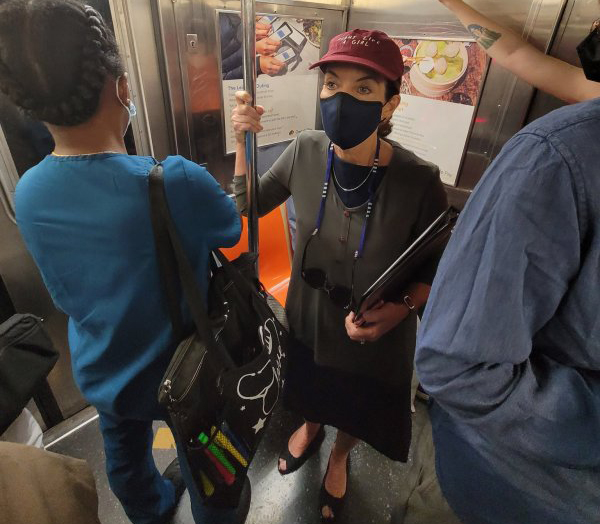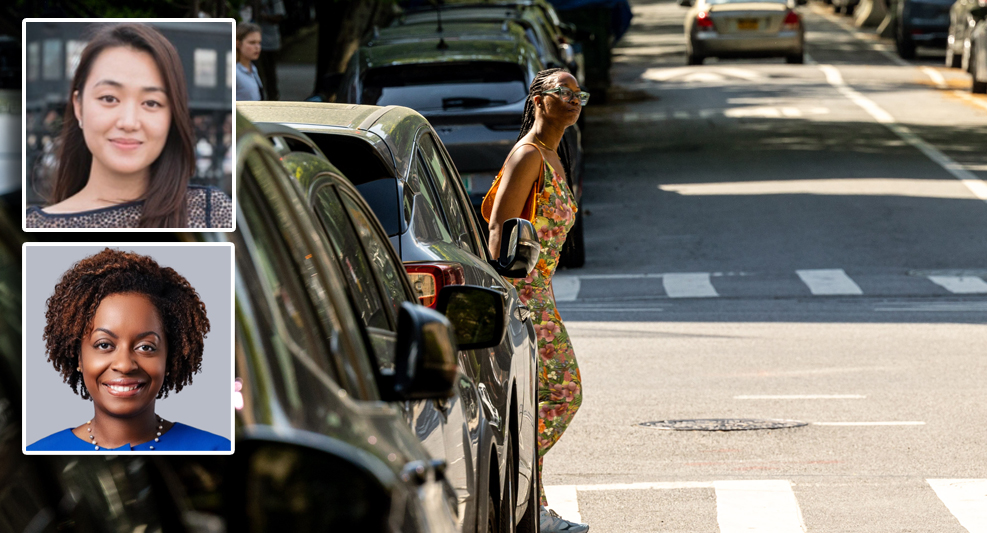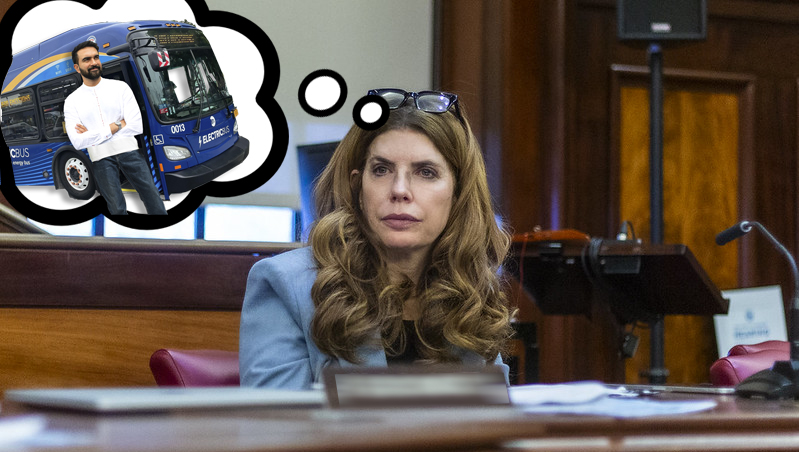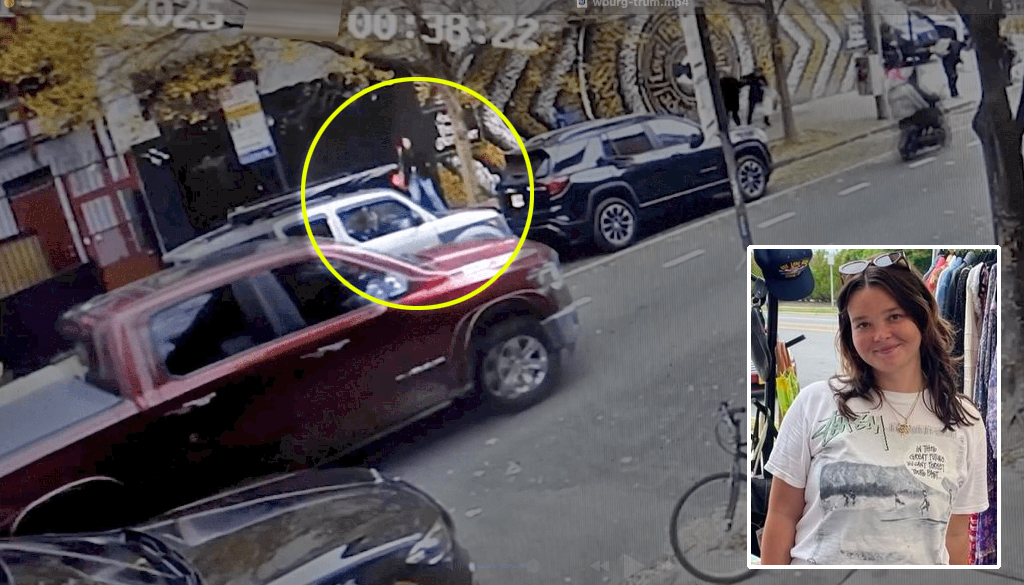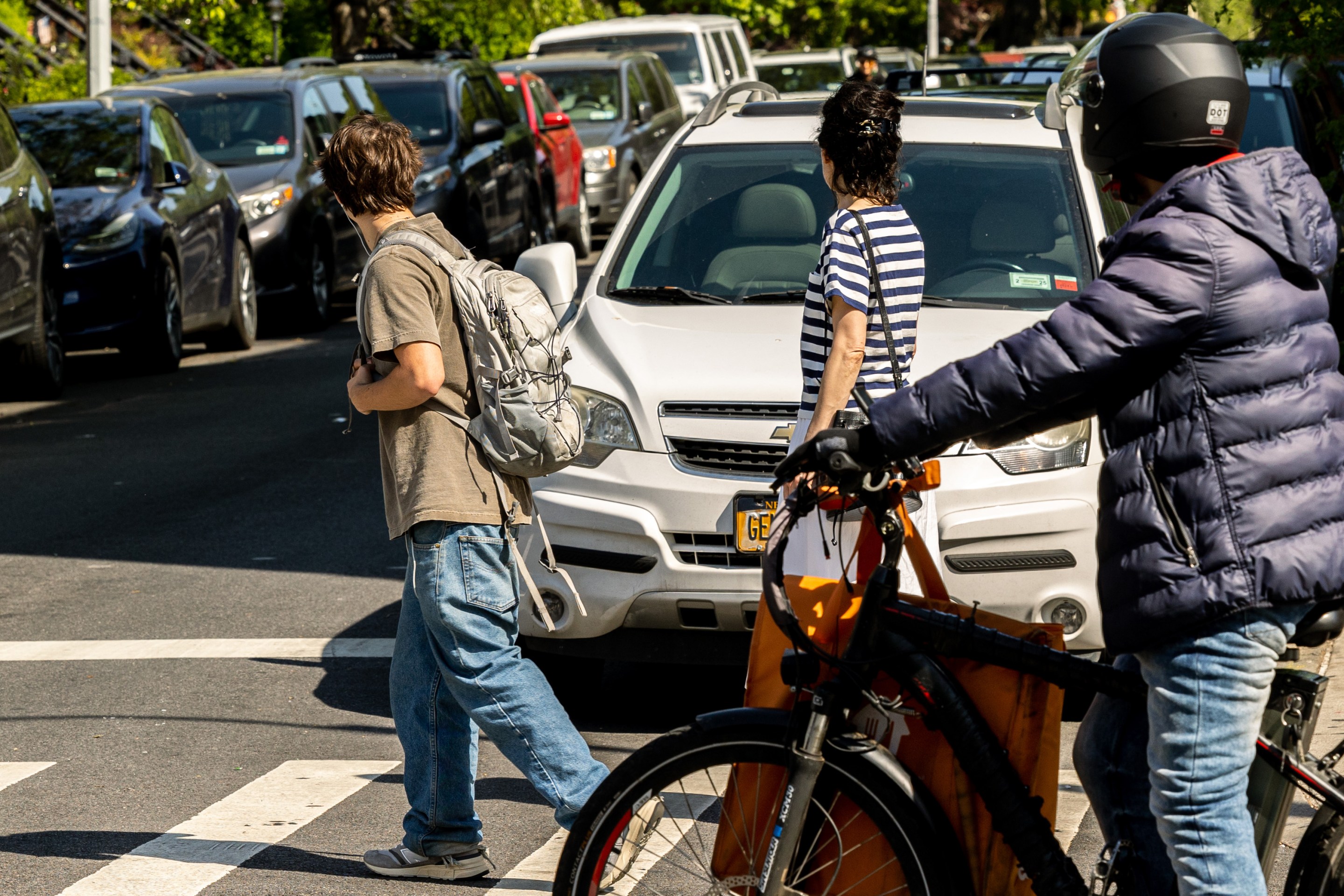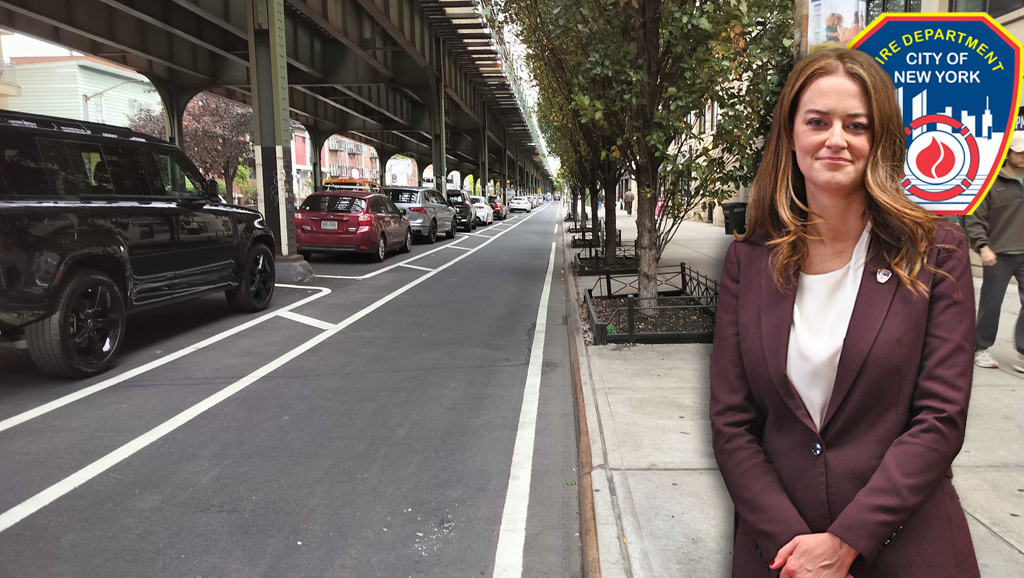Andrew Cuomo — the governor who never saw an MTA budget he didn't want to raid or a splashy but expensive project he didn't want to push — will soon be gone, and in his place is a relative blank slate on mass transit.
What kind of governor will Kathy Hochul be? She'll have to do more than just ride the subway to make the bus and train bearable for her constituents, while also cracking down on a contracting process that leads to ballooning costs (looking at you, LaGuardia AirTrain), moving past Cuomo's edifice complex (again, the AirTrain, but also the Empire State Complex) and making sure congestion pricing happens.
So here's how she should oversee the biggest mass transit agency in the United States, per all the experts we spoke to in the minutes after Cuomo accepted reality:
Hire pros — then let them work
"You have to see this moment as a huge opportunity," said TransitCenter Communications Director Ben Fried. "Gov. Cuomo's micromanagement and politicization of the MTA were huge drags and slowed down necessary changes."
Cuomo's micromanagement of the agency was legendary (in a bad way), and included greatest hits such as driving a focus on the Second Avenue Subway at the expense of making sure the rest of the subway system functioned well, hiring an internationally recognized transit expert in Andy Byford and then driving him out of New York, and pushing an MTA reorganization that critics called less than helpful. By the end, even the people brought on to reorganize the MTA (such as former Chief Operating Officer Mario Peloquin) were walking out the door, with Peloquin claiming this week that he left because board member and Cuomo enforcer Larry Schwartz insisted on signing off on his decisions.
Like Cuomo, Hochul will obviously be in charge of the MTA, but she should trust and delegate to the staff running the transit authority.
"One of the favorite modern examples in transportation is Mike Bloomberg's directive to Janette Sadik Khan, which was, 'Don't fuck it up,' when he gave her license to transform the streets," said Riders Alliance Policy and Communications Director Danny Pealrstein.
And in that vein, Pearlstein said Hochul needs to find other Andy Byfords in the transit world, and then get out their way.
"We need a governor who recognizes what we need, and who also has the humility to realize that they are not the person who knows exactly what that is, and how to do it every day," he said.
"The way to do that is to bring in comparable experts from elsewhere, and the closest we got to it was Andy Byford. But we need to bring in experts who don't just speak English, who can show us that there are much better ways to build and deliver transit, in places in the world that are beating us now at that task that we have. We need to seek out the foremost world experts to make that possible, but we couldn't do it effectively before, because the governor was getting in the way."
Getting out of the way doesn't mean that the agency has to become a backwater of inefficiency though, since observers pointed out that the governor isn't some singular omniscient being with all oversight responsibilities.
"There's been this sense that the public authorities are the governor's sandbox," said Reinvent Albany Senior Analyst Rachael Fauss, adding that oversight bodies like the Capital Program Review Board which has members appointed by the governor, the legislature and the mayor, already exist, but too often lack juice because of a lack of interest from one elected official or another. The current capital plan, for instance, cleared the board without even a cursory review, although even that body felt the governor's micromanagerial push after Mayor de Blasio didn't agree to appoint himself to the board instead of a representative.
"Ultimately, yes, the governor is responsible for these agencies, the buck stops there," said Fauss. "But at the same time, there's plenty of other stakeholders. The legislature has an important job conducting oversight. The Capital Program Review Board is supposed to do oversight. There are mechanisms for oversight that just have not been used, because of the stranglehold that governor has had."
Don't buckle on Midtown tolling
Cuomo slow-walked congestion pricing, but Hochul has a chance to deliver on the program's promise to free the city streets from gridlock and deliver a steady revenue stream to the MTA.
"The quicker congestion pricing happens, the easier it is to do well. And [Hochul] should seize that opportunity so that people can see just how well it is working by the middle of 2022," said Pearlstein.
Allowing transit professionals to do their thing also means creating the political dynamic to get policies like congestion pricing in place so those professionals have the resources they need. She can influence that process by keeping a steel spine when people lobby for exemptions to the toll (or to scrap it entirely now that the Big Dog is gone).
"She'll have to hold the line on things like exemptions," said Fried. "It's where you need a governor to be strong and not allow carveouts to hollow out the effectiveness of the system. Hopefully she'll realize it's in her political interest to do that, because an effective congestion pricing system would be more of a positive for her than something riddled with holes."
Spend smarter
Congestion pricing or not, the MTA is also still spending billions of dollars on its capital plan, and it now has a chance to do it without the famously imperious Cuomo calling the shots. It's a chance for the agency to focus on the kind of maintenance, modernizing and upkeep that doesn't always translate into photo ops at which the governor can drive FDR's Packard.
I just took the first drive over the new Kosciuszko bridge in FDR’s 1932 Packard.
— Archive: Governor Andrew Cuomo (@NYGovCuomo) April 27, 2017
A beautiful car for a beautiful bridge. pic.twitter.com/Fn5avSqw5u
Elected officials are already sounding like they're ready to take the axe to a system where Cuomo was able to base big spending decisions (and line up support from construction firms) by setting up projects that would make people of the future say, "Did you know Andrew Cuomo built that?" Advocates say there's no better time than the current capital plan to move away from boondoggles.
"We just had a governor who loves his ribbon cuttings, but there's all the nuts and bolts stuff that doesn't warrant ribbon cutting and hasn't gotten the kind of attention it should have," said Fauss. "The MTA can only spend so much in a given year, about $7 billion a year for all of their capital spending. So what comes first, what's prioritized? Expansion projects? Or is it going to be signal modernization and state of good repair work?"
The inevitable end of the @NYGovCuomo administration must lead to a re-examination of his personal-pet-boondoggle development projects that will saddle New Yorkers with debt for generations, including the Empire Station Complex and La Guardia AirTrain
— Senator Brad Hoylman-Sigal (@bradhoylman) August 6, 2021
cc: @jessicaramos
New York State is also about to be the recipient of billions in federal fun money, courtesy of an infrastructure bill shepherded by the state's own Senate Majority Leader Chuck Schumer. It's a situation where Hochul and elected leaders need to demand the MTA show a serious effort to be accountable for its spending.
"Hundreds of billions of dollars are about to come to New York, and we need to find a way to make that work best for riders and put a strong plan in place to get the best bang for your buck," said Lisa Daglian, the executive director of the Permanent Citizens Advisory Committee to the MTA. "The MTA has done a detailed analysis of what it needs, so we'd like to see that transparently moved forward, and working with elected officials at the state and state, local and national levels, really determine the best path forward that going to be an equitable distribution of funds."
Focus on service
Daglian applauded interim MTA CEO and Chairman Janno Lieber's recent commitment to restoring service to pre-pandemic levels, a crisis the MTA has been dealing with after a combination of a hiring freeze, retirements and workforce deaths meant a drop in the amount of trains the agency could run. Transit leaders will need to stay focused on quickly and safely staffing up, since as Daglian pointed out, crappy commute times only mean depressed ridership figures.
"If you're waiting for 15 minutes for a train, you may decide the next day to work from home," she said.
But the MTA should also take the chance to focus on making service more equitable by reviving its bus redesigns and finally unlocking commuter rail in New York City.
"The MTA has many commuter rail stations in southeast Queens, where service is very infrequent, and expensive," said Pearlstein. "Making that service more frequent and less expensive would reduce travel times and increase access to opportunity for the overwhelmingly Black communities in Southeast Queens. This is a classic example of how the governor can help and not hinder [because] frequent and affordable service requires resources ... in the state budget and have the managers at MTA HQ and the Long Island Rail Road figure out how to make it work best."
The atmosphere of a fresh start means its also time to dust off the bus redesigns for Brooklyn and Queens, and go beyond an outreach process where MTA executives stand in cramped rooms and get heckled by redesign opponents.
"The starting point to resume the work on bus redesigns is to meet riders where they are. Riders are waiting too long at bus stops and stuck too long on slow buses but that is where riders are able to give the MTA an enormous amount of information about what would make for better trips. Whether that's through in-person surveys, whether it's through QR codes or something else, the MTA should embark on an enormous amount of information gathering from actual people depending on bus service now about what they need," said Pearlstein.
Finally fix the bridge issue
Does Hochul want an easy win (and not punishing Mario Cuomo for the sins of his son, we mean)? She should open the MTA's planning process to cyclists and pedestrians.
"All MTA-managed bridges within the five boroughs are desperately in need of bike and pedestrian access that meets the bike boom and our 21st-century transportation needs," said Transportation Alternatives Staten Island Organizer Rose Uscianowski, who has been fighting to get a bike and pedestrian lane on the Verrazzano Bridge (which Cuomo's MTA has been less-than-honest about).
Legislators agreed that the MTA needs to get into the 21st century when it comes to its own infrastructure, passing a bill during the 2021 session that adds bike and pedestrian advocates to the authority's rider councils. If Hochul signs the bill, the agency is one step closer to including bike parking in its next big train hall, or maybe even considering that Verrazzano bike lane.
If the lieutenant governor, who herself was photographed earlier this year hyping the Empire State Trail, signs the bill, she can begin to help fix a truly ridiculous local oversight.
"Andrew Cuomo’s Empire State Trail connected Brooklyn to Canada yet we still can’t bike from Brooklyn to Staten Island," said Transportation Alternatives spokesman Cory Epstein.
The MTA even has opportunities to crib ideas from other bike lanes on major bridges, bike lanes that don't rely on ludicrous and costly designs that are meant to be killed.
"The new Brooklyn Bridge bike path can serve as a blueprint for bike access on bridges like the Verrazzano, Whitestone, and Henry Hudson," said Bike South Brooklyn co-founder Brian Hedden. "Buffalo's Ohio Street lift bridge shows that two-way bike paths can go on open-grate decks like the one on the Marine Parkway Bridge."
